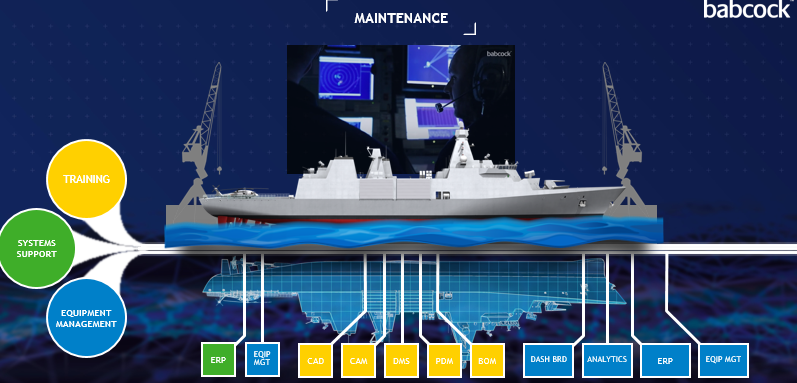Digital Technologies are moving at a rapid pace everywhere in the world, and for companies like Babcock, it’s vital we keep abreast of those changes
The very nature of our business means our customers are turning to us more often to answer those technology challenges. Over the three years I’ve worked as a Technology director within Babcock we have looked at how we apply new digital technologies to benefit our clients at all stages of a project lifecycle.
From nuclear power stations to warships, the assets we manage are complex and critical, so collaboration with our customers, supply chain and, increasingly, the work we are doing with our academic partners is key. As well as mature technologies, we need to be aware of emerging ones, so we can apply appropriate solutions that will prolong the life of these assets, which sometimes have a lifecycle of 60 years and beyond.

At Babcock we have an inherent understanding of the physical assets we manage, but is that sufficient? Understanding the digital landscape means we can enhance our expertise and work with new technology areas such as the digital footprint of an asset or its digital twin.
When the Government announced our role in the production of the new Type 31 frigate, we were already actively engaging with our subject matter experts within Babcock, our supply chain, academia and of course our supporting partners to plan how these digital technologies would be deployed.
Digital Thread
So what is a Digital Thread? The Digital Thread is a holistic view of an asset's data throughout its entire lifecycle – similar to a digital fingerprint – or digital DNA. The typical lifecycle of an asset starts in design, then moves to build and onto the operational phase, including maintenance and refits/life extension, and finally to disposal. To achieve this we need to create a powerful framework of digital technologies encompassing all elements - such as concept, design, manufacturing, operation, post-life, and retirement – and all of the multiple sources of digital data need to come together to allow for a seamless transition of information from one phase of a project to another.
Working on something at this scale, it is essential that we collaborate more effectively with our partners, supply chain and industry. Babcock’s role in the Type 31 programme is significant as we are responsible for the design and build of the five frigates, while at the same time being a key long-term partner supporting Royal Navy warships through-life. So our intent is to create a consistent Digital Thread and ensure its successful transition to the operational phase.
So we have to embrace Digital Technology, and in particular, the role the Digital Thread plays in the lifecycle of an asset and its application, to improve the total lifecycle cost for our clients.
READ OUR DIGITAL THREAD ROUNDTABLE REPORT HERE
Delivering value through data
During design and build we employ Industry 4.0 practices to help provide a seamless data flow to deliver efficiencies during the construction phase. During the support and maintenance phase we will apply our own range of digital technologies and data analytics to deliver that ongoing value for our customers through our iSupport360 approach.
The advanced analytics that underpin iSupport360 help us simplify complex problems, reduce risk and inform the customer at every stage of the asset’s journey, resulting in a fully immersive support service. The benefit of real-time analysis also means we can optimise maintenance and increase the asset’s efficiency and availability. Like the Digital Thread, we have to look at how all our technologies and capabilities can cut across any of the assets we manage – be they ship, submarine, critical infrastructure and our people.
Investment in Digital Skills
To deliver this Digital Thread we know we need to invest in our people and give them the skills to embrace the advances in technology. We recognise we will also need different types of skills to support this technology growth and as a result we are working closely with our university partners such as Strathclyde, Edinburgh and Cranfield to deliver this.
Future skills is fundamental to Babcock, and one of the reasons we brought our academic and industry partners together at this event. We need the right skills, the right people, and the right career paths in place for them – be they data analysts, technicians, graduates, or apprentices.
The work we are doing now will allow us to build on our growing investment in technology across our sites and in all the Sectors in which we operate: Aviation, Land, Nuclear and Marine.
Whatever the engineering or technology challenges, physical or digital, we know as engineers we have the ability to solve them. We’re looking forward to it.




Red Bull makes hydrogen fuel cell play with AVL
Many a true word spoken in jest. "<i><b>Surely EVs are the best solution for motor sports</b></i>?" Naturally, two electric motors demonstrably...